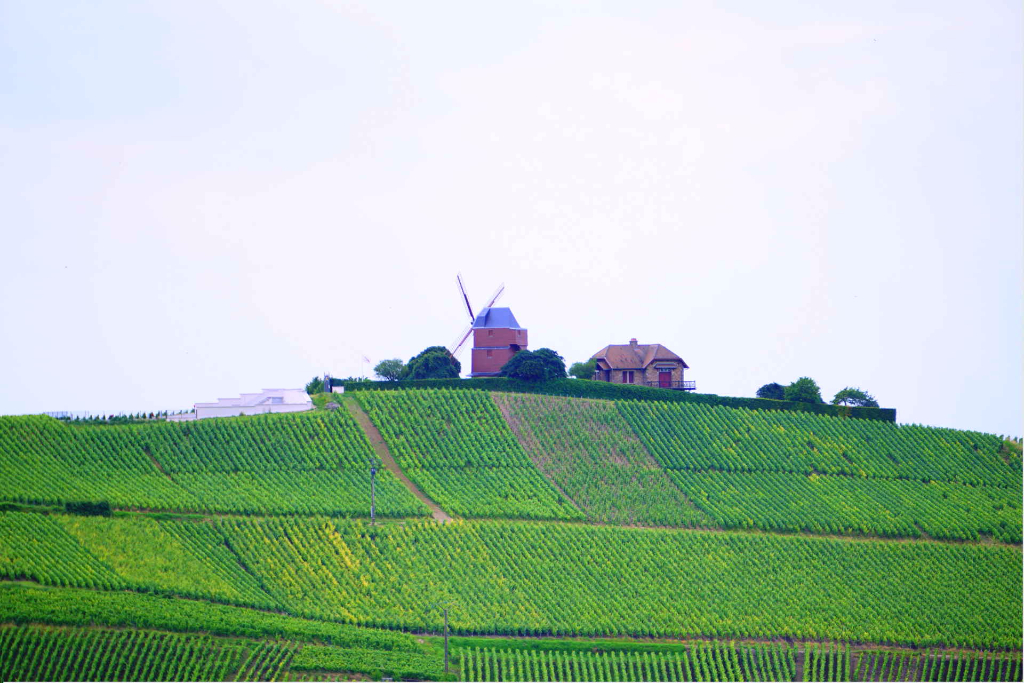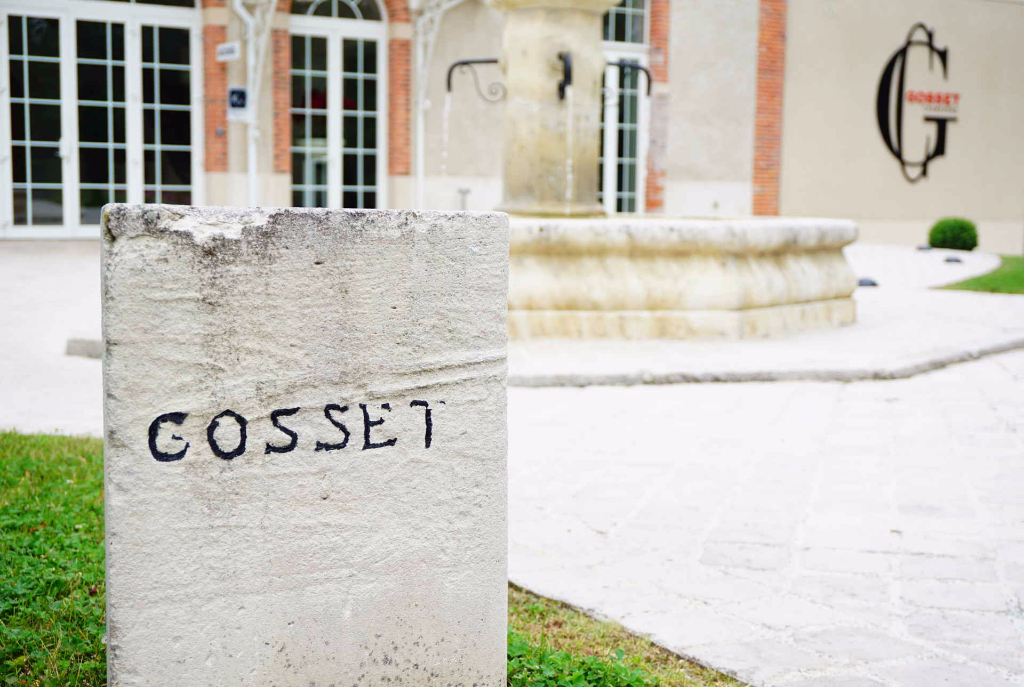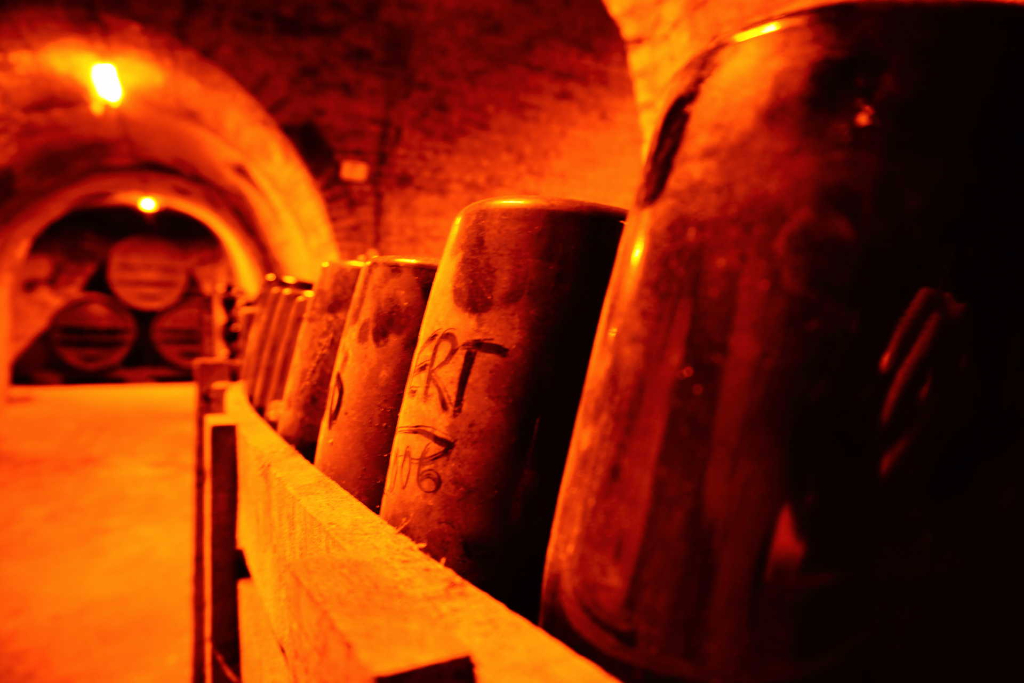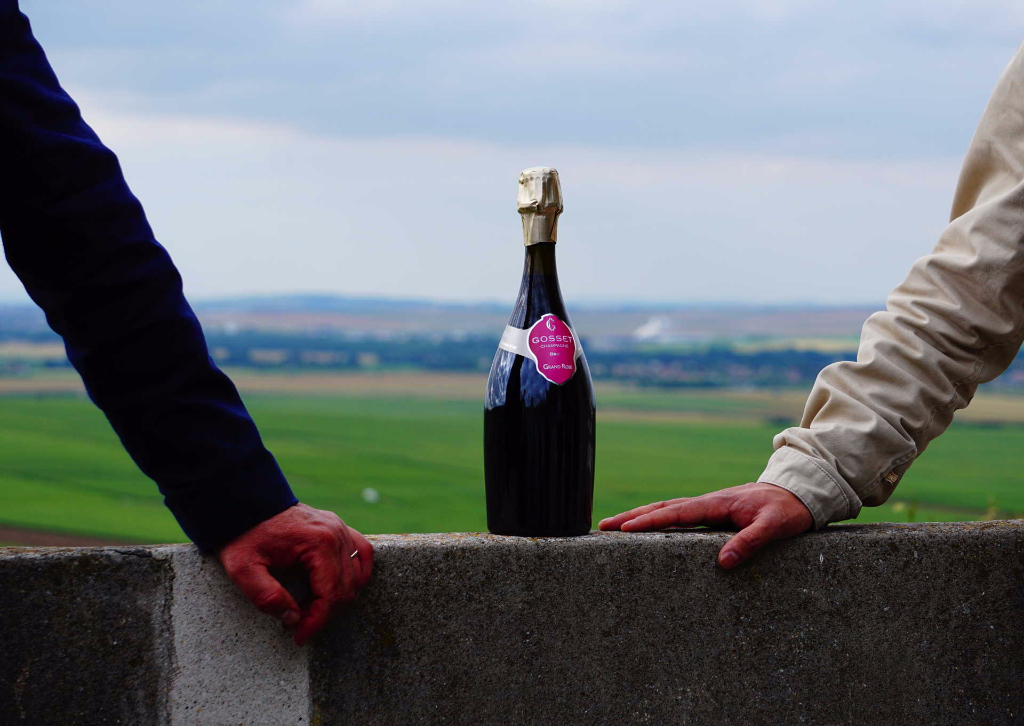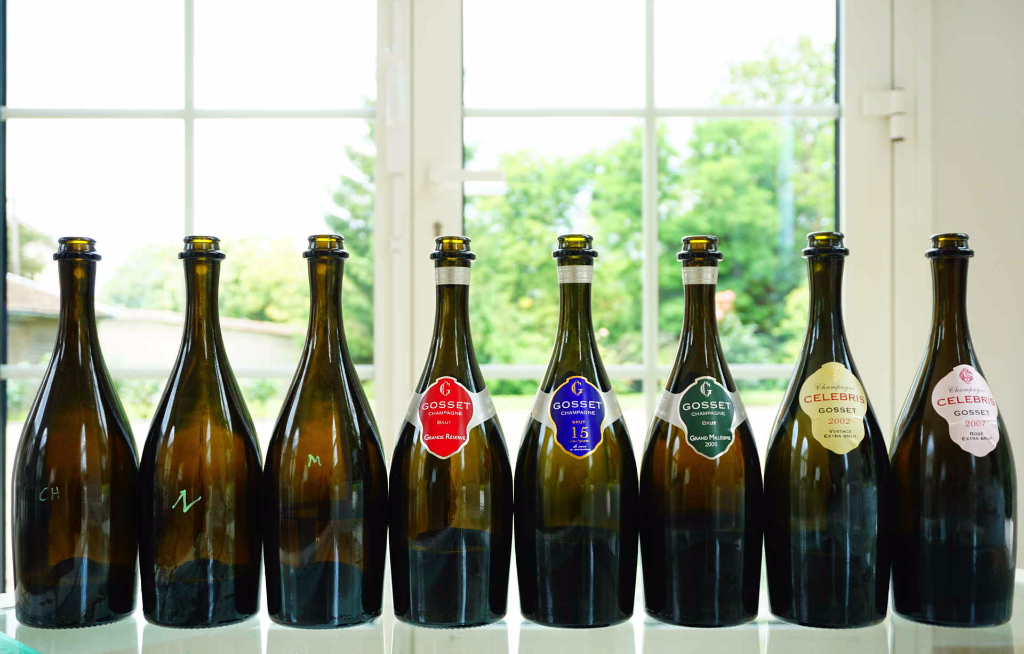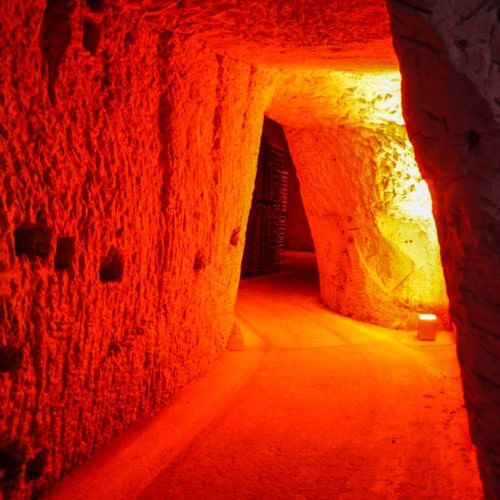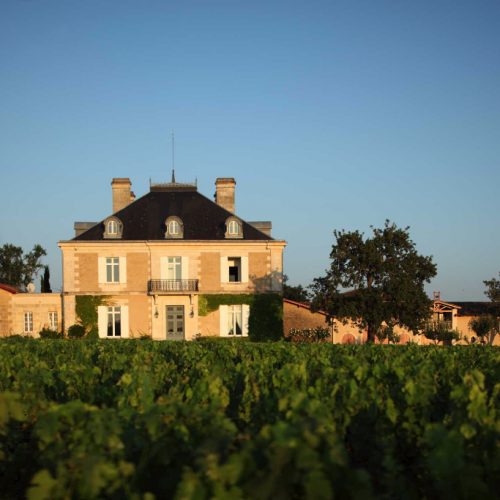But, champagne is a lie. One that has long legs and you feel so incredible comfortable between them. And this lie is so mighty, that you are ready – hypnotised by the charm – to pay so much more for something than for an comparable wine. If you can even compare that. A spell, where it isn’t about the joy of drinking itself, but about the symbolism what it seems to be. In the suspense between elixir of life, luxury and prestige.
But the spell is over now. The sceptre of a courtly, noble drink has been left behind by the brand champagne and arrived in every milieu. Champagne is a mass product, although it tells you to be exclusive. It is already about more than one Million euro per year in a middle segment of a champagne house, millions of bottles, that are sold to all five continents.
But although there do not seem to be any differences anymore, the David Goliath relation is known until today. Biggest company conglomerates still have more and more influence in the Champagne. They want to buy more. The land, the grapes of the winemakers.
And in contrast to the big ones, there are smaller champagne houses and winemaker champagne. The so called „underdogs“. If you look at the top five*, Gosset is on eye level with the big ones, although it belongs to the middle. And Gosset is a real „dog“, the name meaning „small dog“ in Catalan. Cheers, woof woof.
Apropos dog, humans best friend. Gosset is my loyal companion for years now. Someone, who always finds its way back to me. Or I find back to it. Best wine just goes under my skin. And it was able to do more. If the best conversation stopped, the counting of the perlage was lifebelt and flirt in one.
Gosset lives from its most important asset, the human. The brand displays exactly was the Champagne is – constancy. The result of historical embossing, a cry for help against dynamics, for standstill.
You don’t like standing still? The people from the Champagne do. It is a place where so many invaders came. There were the Gaelics, the Ostrogoths and Visigoths and the Germans. A place that isn’t secured by hills and like that it provoked its vulnerability in the past.
That is why the bond between the humans is written in their history. And champagne is a part of this history, the lubricating oil of the relationship between human and product, which keeps the business running.
And just like that, Gosset links more than 200 winemakers, who supply the house with grapes. Nothing average. But from the best locations, for example from Vallée and Grande de la Marne, Montagne de Reims or Côte des Blancs, all Premier Cru and Gran Cru. Every year the same game. For generations. It might also be due to the constant tie between Gosset and its winemakers. And it will stay like this in the future too. Because you feel comfortable like this and proud. And you get good money for the grapes, but it is no quick money.
But who is supplied, also has to deliver. The order: Bring me a constant, high quality into my glass.
And that is the nice thing about champagne: The playing with the assemblage, which makes the quality secure for Gosset every year. The looking for balance. The balancing of bad vintages with reserve wine. Playing with the endless options of the grape goods, that bring more than 200 suppliers into the house. Reducing to the maximum. Finding a qualitative high level. Gosset delivered this in the last few years. But they do not ship everywhere…
No Duty Free Shop, no „I give you 20.000 euro and you list my champagne excuses“. But at advanced retail or at your local wine dealer. The better ones, of course. This strategy seems to fit the house.
And now? Where can I buy the champagne? Probably at the house itself – that’s what I thought and I started driving. Arrived. I am sitting opposite of Odilon De Varine, today’s chief cellarer in Epernay. The smile doesn’t sit easily on his face. Reason for that is the sudden death of the cellar master Jean-Pierre Mareigner, who worked there for three decades. And if there is something people do not like in the Champagne, it is instability. We’ve already had that topic…
But he himself works for years at Gosset and knows the house very well. It seems to me, as if it is his first day there, that’s how his eyes sparkle until he starts talking: Pinot Noir and no go for malolactic fermentation.
That is really cool. Pinot Noir is the diva, the queen of all grapes. Bitchy but brilliant – if you know how to use it. This grape variety gives the champagne its structure, the freshness, the fruit and strength.
No go for malolactic fermentation? Oh, what the existence of bacteria – or better the not existing bacteria – can cause. With an oppression of malolactic fermentation, meaning a reduction of the acidity of the wine, in which stronger malic acid is changed into mild lactic acid, is essential for Gosset, to create the style of his champagne. Enrichment means renunciation in this case. Because like that the wines need longer to become harmonious. But therefore, a longer bearing potential is won. And it secures freshness and acidity in times of climate change. For my knowledge, there are less than ten percent of all champagne house that renounce malolactic fermentation. You just have to be able to do it.
Odilon de Varine „At Gosset we make wine in the first place, the perlage carries it onto a higher level.“
Back to Ay. Now I have the feeling as if everything has been said. Silence. We look at each other. Odilon has home advantage. He knows which wines he is going to serve now. „Voilá“, he says and separates the glasses. I hold on to the facts now: Vintage quality, assemblage, bottle fermentation, dossage, tasty or not.
That was last week. Oh yes. You remember? My boss is in a good mood today. There is something to celebrate. The wine dealer wanted to sell me some more champagne brands. Champagne, which delights humans because they like buying everything from one multinational brand. Like handbags with two letters. Today, I need a wine that is more individual, and which doesn’t make my purse seem empty after buying it. I got it. Luck means perlage today, not pearls.
*La Revue du vin de France voted champagne Gosset on rank 4 of the top 50 list of the best champagne producers in the world.
For the champagne thrill and Gosset chat
– Gosset has the right to look back on a history of the oldest champagne house. Who doesn’t believe this, has to visit the Bibliothèque Nationale in Paris. The Dossier Bleu No. 29876 (322) contains a handwritten document, in which it says that Pierre Gosset has been winemaker and trader in 1584.
– For the 100th birthday of the Statue of Liberty they produced the biggest bottle of champagne „Salomon“ in the whole world and like this they replaced the champagne bottle that has been the biggest one until then, called „Nebukadnezar“.
– In 1983 they were able to rescue several dozen of still good looking bottles of champagne from a cargo ship that sunk in 1841 in the Australian Port Phillip Bay.
– Today’s form of bottles comes from the antique bottle from the year 1841.
The Wines
Grande Reserve brut
This champagne is the heartbeat of the house. Pinot Noir brings the structure and the acidity, but still leaves some space for freshness and delicacy of the Chardonnay. The Pinot Meunier with its cautious acidity structure works as the link in the assemblage. Like that, it is the all-rounder and gives flexibility while drinking. Expressive, but never tiring in the mouth.
Celebris Vintage 2002 extra brut (drunk up, now 2004)
What an amazing vintage. Elegance and pressure, made with precision. Here, the assemblage shows how far you can go and how both game partners (Pinot Noir and Chardonnay) are represented equally, without taking the other some bits of their characteristics. Everything is put into a nutshell here: Fruit, minerality, acidity and structure. It results more than the sum of individual components. A fantastic champagne. Probably better with meals. Who cannot get one will be as lucky with the vintage champagne from 2004.
Celebris Rose 2007 extra brut
Bad news, unfortunately, there are only about 10.000 bottles. The good news are: The champagne is brilliantly thoughtful and implemented. The red wine proportion of under ten percent is chosen so that the tannins give the champagne more complexity and it wins in longevity, without influencing the big role of Chardonnay and Pinot Noir. With complex fruit aroma in the middle of the enjoyment shaft of red and exotic fruit and floral elements.
15 ans de cave a minima brut
This champagne is not all about the primary aromas anymore. It is about the maturity. It is about 15 years of storage and the effect of time on the wine. Because of the long storage there is a fine amount of acidity in the background. Depth and sweetness become more dominant and shape the wine towards something like jam. The refrains malolactic fermentation plays into this wines cards because of the remaining power of the wine.
Gran Millisme 2006 brut
2006 has been shaped by an optimal maturity. A big vintage besides 2015, 2012, 2004 and 2002 in this century. Because of the 55 percent of Pinot Noir, this wine presents a durable acidity and shows itself bubbly. Fruit like grapefruit and quince, variable on the palate and a lasting outflow.
© All fotos in this article exclusive copyright Weinkrake


